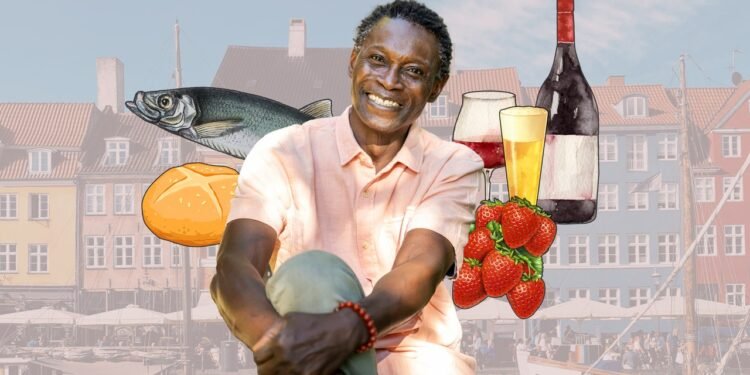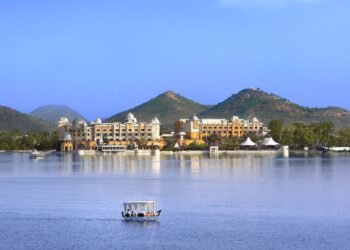Did you have a breakfast routine throughout the trip?
A lot of people move around by bicycle over there, so I rented a bike on the Donkey Republic app, and every morning I would go to a different bakery. The city is known for Danish morning buns, but even their croissants are done a special way. The Carlsberg crew would tell me which bakeries they thought were the best, and everyone had a different answer, so I would pop around on my bicycle and grab a couple of buns every morning trying them out. I always got more than I could eat, so I’d leave the extras in my hotel room and they became the perfect snack each night. Hart Bageri was one of my favorites.
What was your most anticipated meal of the trip?
Unfortunately, Noma wasn’t open when I was there, otherwise that would have been it, but I did get to go into the kitchen with the team, which was special. I was also really looking forward to traditional Scandinavian cuisine, the pickled herring, and that was good. I went to this place, Aamanns Genbo, and it was a bit more creative, not totally traditional, but I really enjoyed it.
Did you happen to find any great cheap eats?
Copenhagen is not cheap, right? And when I start translating between their currency and dollars, which I never do until I’m on the plane home, I realize I spent so much money. But, actually, René [Redzepi] sent me to this place under the bridge, Rosforth & Rosforth, where there’s a French guy with very interesting natural wine and food that goes with it. It was strawberry season, and the strawberries are amazing there, so you’re eating fresh strawberries with the wine, right by the canal as the boats are out and about. I didn’t pay for it, so it was really cheap for me! But it wasn’t an expensive place. They also do open sandwiches.
What about a splurge meal—did you go all out for anything that was totally worth it?
Sanchez was a splurge. There was a stuffed poblano with a coulis sauce that I really enjoyed. The chef has a really great approach to Mexican cuisine, where the Scandinavian environment plays a role. The Mexican flavor was there, but there was a simplicity, a minimalism, in the design. Food is so influenced by the environment, and the conversation between the consumer and the chef always depends on where you are and who is serving. I liked it. If Noma had been open that would have been a splurge—so even though I wish I had eaten the food, I’m glad my wallet didn’t.
Which meal came with the best ambiance?
There was the place, Il Buco, where they were really into fermenting—they were actually doing fermentation in the basement, making fish sauce and all kinds of things. It was in an old building, with long wooden tables with no tablecloths, and everything was meant to be shared. There was an open kitchen in the center, and exposed brick. The vibe was convivial, not too loud, but friendly. People could still hear themselves talking. And the waiters were not uptight. They knew what they were talking about, but they weren’t lecturing you. It was fun.













